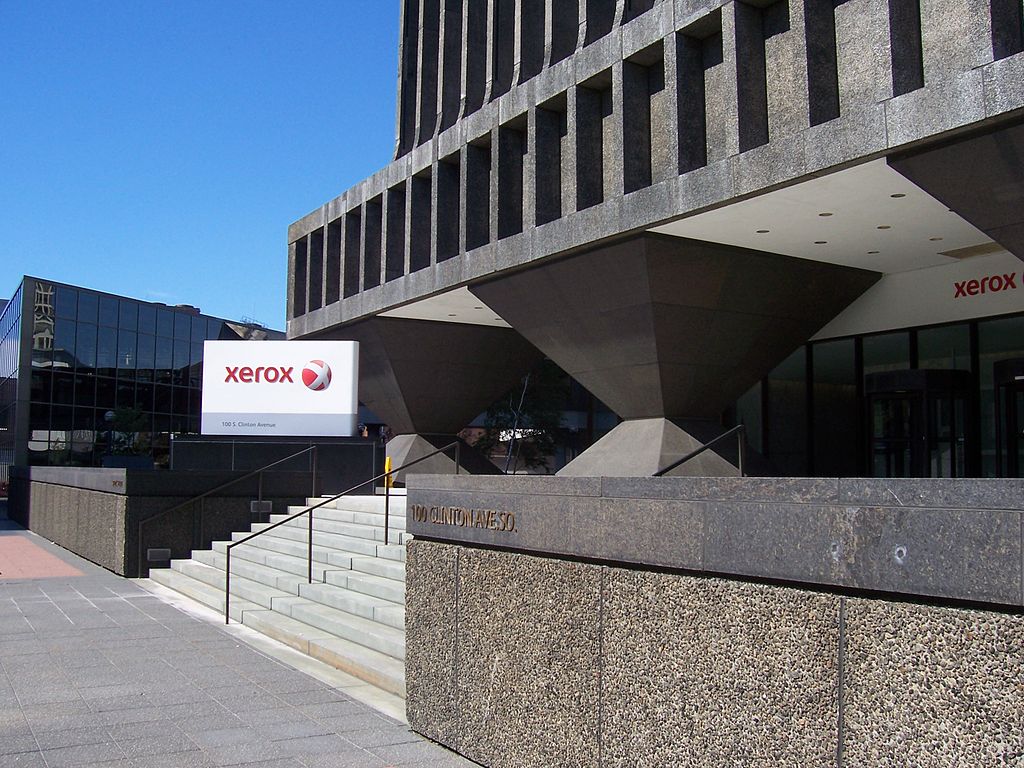
Best known for its heritage of printing, Xerox is moving its focus to becoming a digital provider and helping government bodies become paperless. An ironic strategy for a company focused around all things paper, but to move with the times and survive in the digitally changing market Xerox has embraced digitisation across enterprises and public sector.
An area taking huge advantage of the digitising world is healthcare, a sector Xerox believes has reached digital maturity much quicker and more in depth than any other government sector.
Xerox covers four areas of public sector; higher education, central government, local government and healthcare. Examples include Luton NHS Trust, Department for Work and Pensions and Imperial College London. Jonathan Elliot, Director and General Manager of Public Sector digitisation at Xerox took time to speak to CBR about the changes Xerox has made in the digital world and how culture is a huge thing for the government to transform their ways.

Elliot deals with everything to do with public sector, from appointment reminders to digital planning permission, he said: “We provide services like print management, moving this to a digital system. How do you help the customer control the paper use they’ve got and help understand how reduce it? Ultimately want to go through analytics – look at what you’re printing, why you’re printing it and why can’t it be done electronically”
A primary driver for Xerox is eliminating costs for organisations across the public sector and ensuring they are using the most cost effective method. This doesn’t always include monetary costs, but physical costs as well.
The company will assess an organisation and work out the best method to take to enhance their digital strategy and undergo the transformation. Cost savings can be done by eliminating the amount of physical letters being sent out to patients, or printing off planning documents. Elliot discussed the issues organisations face today is that patients or customers aren’t always in the same place and digitising their organisations will make services readily available wherever, whenever.
“We help organisations digitise records; all around the country every trust has got warehouses of records. We scan these records digitally, so that they are available in more than one place for Doctors and Patients. Make it digital, so that it’s on an iPad or wherever it needs to be saved so that multiple doctors etc can access it. It’s got to be secure and accessible at the point of need.”
A simple change makes the big difference, changing all records digital can give organisations massive benefits like Luton NHS Trust saw. Working alongside Xerox the NHS Trust eliminated a 750sq ft library, which held all the hospital’s medical records, and turned it into another cardiac centre. In doing this, it allowed the hospital to attend the needs of its patients quicker and ultimately increasing patient care and hospital efficiency.
Smart Technology is improving the NHS
Living in such a digital world today, we take for granted the simple things like a letter, which is what Imperial College London (ICL) found. Elliot pointed out the accessibility to using mobile phones to contact patients, as ICL did. Elliot said: “A few years ago the College got patients details and told them to opt into electronic communications, when we went live within two months 28% of letters were decreased straight away. Consumers would rather get a digital text reminding them about an appointment rather than a letter that is just shoved on the side that could be forgotten about.”
Xerox makes their idea a reality by using cloud based systems to store data, then uses artificial intelligence to send data to consumers when necessary. With the system, Xerox and its customer partners can track if a message has been received and read and send reminders. Back to costs, each appointment missed will cost GPs or hospitals £160. Added up together, the digital technology helps drive impressive savings as it keeps that do not attend rate down.

As well as benefitting organisations on costs and efficiency, Elliot explained the mass benefits digitisation has on patients too focusing on the patient over anything else he said: “Invest in true patient services, creating more capacity. Patient satisfaction is at the heart of what the NHS wants. Freeing up more space and allowing more people to be seen because of digital processes more efficiently is really the benefit.
Healthcare is a heavily digital world now, but an area Elliot believes holds much opportunity is Local Government. Areas Xerox aim to deliver a digital transformation is through digitising of records, planning applications and council data.
Elliot said: “I see a huge opportunity for Local Government. There is paper everywhere behind processes and to me that represents an opportunity to do some of the work we’ve done in healthcare and digitise that process, improving cost savings and better experience for customers and patients.”
Areas in Local council such as Warrington Borough Council and Edinburgh Council have worked with Xerox for providing print management services. This optimises the office printing fleet to either a small number or offsite to an external Xerox location to automate access to all users.
Across both Local and Central Government areas, Elliot emphasises the need for shared services to benefit the organisation efficiency. He said: “Work isn’t a place anymore, work can be anywhere. Today there is the need for shared services, like print and posting using cloud based shared services. In the future, offices will be using out software we can route inbound mail to you electronically.”
Public Sector organisations have been highly targeted by hackers, the NHS being hit the worst through the WannaCry attack and energy sectors and local councils being targeted too. Xerox believe security is of the upmost importance and their digital software development ensures customers always have the most secure systems.
Emergency Services are also embracing digital technology
“All our equipment is secure, users can print data over a network but only once it is linked to their user ID, linked to devices and printers. Everything is done through authentication like that, so any case sensitive data can only be printed by the person authorised to have the data.”
Jonathan discussed printing opportunities for higher education, in student services, that allows students to have a central workplace for free printing services. This is just another initiative Xerox hopes to work towards, and develop a digital age in another government sector.
From a company focusing around paper, it’s on its way to the digital age where paper is shredding away. As a company, Xerox asks how they can help public sector from being a paper based business to digital and said: “If it’s just about print, our business will be difficult to run in years to come. We need to innovate, we have to bring new services to market. Live in a digital world and trying to help the public sector become a player in that technical world.”






